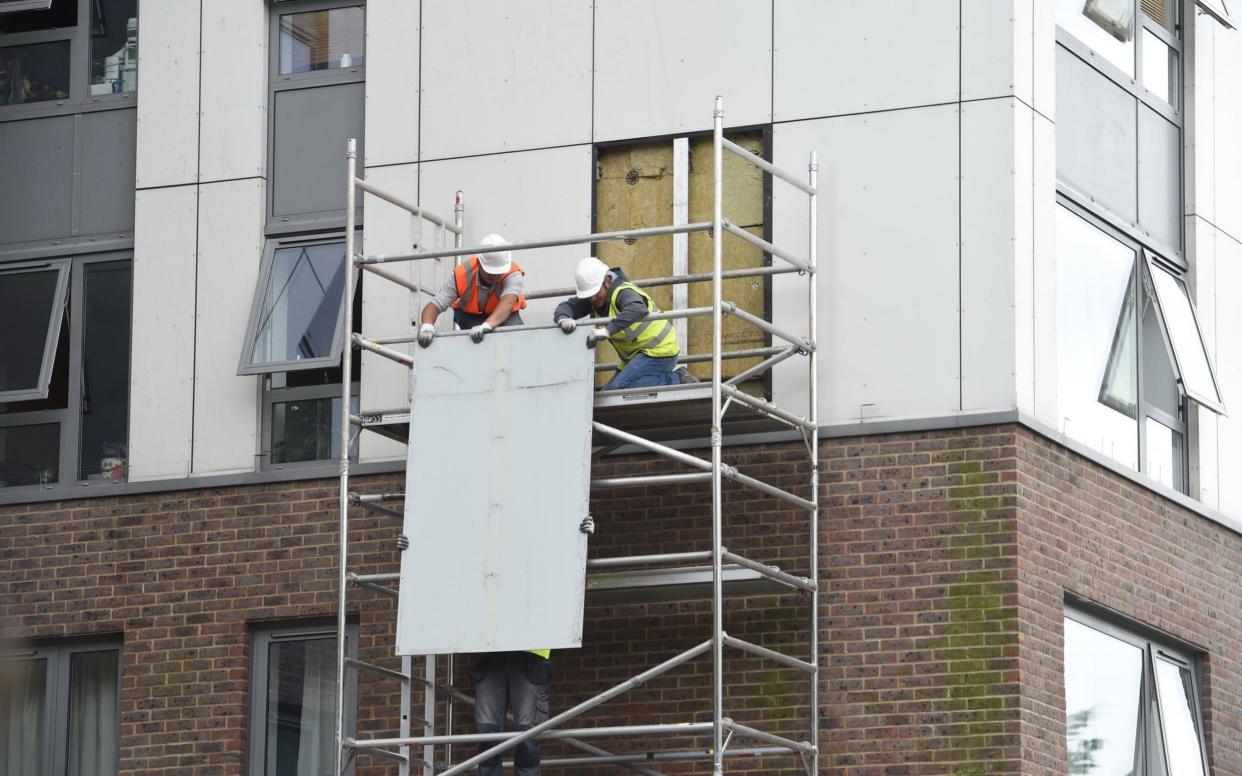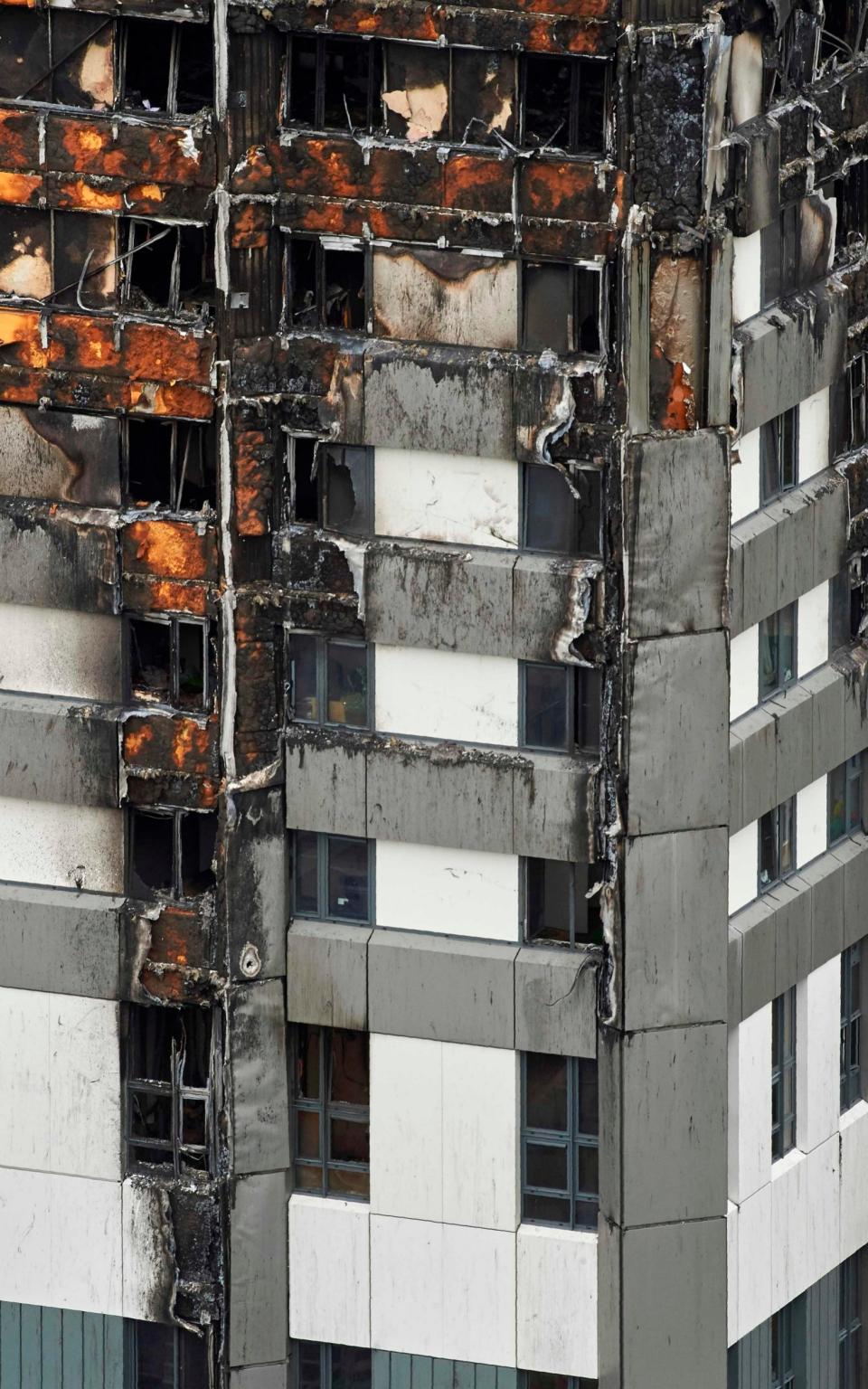Building firm responsible for Grenfell cladding accused of supplying sub-standard panels to other council blocks

The building firm responsible for the combustible cladding at Grenfell Tower was accused last night of supplying sub-standard panels on other London tower blocks.
Camden council said it was considering legal action against the construction company after it discovered the combustible cladding on tower blocks in the borough.
The council said the panels fitted “were not to the standard that we had commissioned”.
The polyethylene panels fitted to Grenfell Tower are reported to be £2 cheaper per square metre than similar fire resistant panels. The cheaper panels were also fitted in Camden.

Camden tested the cladding on five housing blocks on the Chalcots Estate and discovered it also contained a highly flammable polyethylene core between layers of aluminium sheets.
Almost 4,000 residents may have to be evacuated, although that will be dependent on the outcome of an urgent fire safety review. Around-the -clock fire safety patrols were put in place as a precaution.
The council insisted that it was surprised to find the cladding had been used in the project completed a decade ago. The same construction company Rydon that refurbished the Chalcots estate also won the £10m contract to clad Grenfell Tower.
In both cases, while Rydon was the main contractor, it subcontracted the design and installation of the external cladding to Harley Facades.
A sample of the outside panelling was sent to the Building Research Establishment, based in Watford, for testing and discovered to be the same as that used on Grenfell Tower.
In a statement, Councillor Georgia Gould, Leader of Camden Council, said: “The new results from the laboratory show that the outer cladding panels themselves are made up of aluminium panels with a polyethylene core.
“Therefore the panels that were fitted were not to the standard that we had commissioned. In light of this, we will be informing the contractor that we will be taking urgent legal advice.”

The council has emphasised that the “arrangement of the cladding and insulation” is “significantly different” to Grenfell Tower as it sought to allay residents’ fears.
One of the towers on the estate - called Taplow Tower - caught fire in 2012 but the blaze was contained. It raises the prospect that other factors on Grenfell Tower - as well as the cladding - contributed to its rapid spread.
Local authorities are now urgently testing cladding up and down the country. Three high-rise tower blocks in Plymouth have also been found to use the same combustible panels fitted more than 15 years ago in 2000.
Plymouth Community Homes said: “We have implemented 24/7 monitoring of the towers by security teams.
“We are completing further checks today to ensure all fire doors remain in place and closers are fitted and operating as they should be.
“We are installing additional fire protection to the interiors to the stairwells of each tower today as an extra fire safety measure.”

Rydon was awarded the £66 million PFI contract in 2006 and work was completed in 2009. Under the terms of the deal, Rydon receives an annual fee for maintenance of the estate.
Last night, the council began the job of removing all the cladding from five tower blocks, four of them 22 storeys high.
A source inside Camden declined to discuss the precise terms of the contract and what was specified in it that meant the combustible cladding was at odds with what was expected.
In a statement yesterday, Harley Facades insisted the cladding used in the development was as billed in the contract.
The company’s managing director Ray Bailey said: “These works were as described in the contractual specification and approved in the usual process for construction and building control by the London Borough of Camden.”
He added: “There is no evidence to suggest that this product and cladding system installed in Camden is unsafe.”
Rydon failed to respond to calls and emails yesterday. It issued a statement a week ago and has kept its counsel since. On its website, the company said the Grenfell Tower refurbishment had “met all required building regulations - as well as fire regulation and health and safety standards - and handover took place when the completion notice was issued by Royal Borough of Kensington and Chelsea building control.”
It declined to respond to Camden Council’s allegations.
Rydon’s chief executive Robert Bond has expressed his “personal shock and devastation” over the disaster in which at least 79 people died.
“In light of the Public Inquiry, we cannot make any further comment at this time,” said Mr Bond, who according to reports drives an Aston Martin with a personalised ‘Bond’ number plate.
Other councils had begun the process of testing cladding on their tower blocks but were still awaiting results last night. It is reckoned testing will 48 hours to complete. The cladding and how it was fitted will be central to a series of investigations that includes a public inquiry but also a criminal investigation by police.
Other factors include the lack of sprinklers in Grenfell Tower and official advice that residents should ‘stay put’ rather than flee a fire.

 Yahoo News
Yahoo News 
